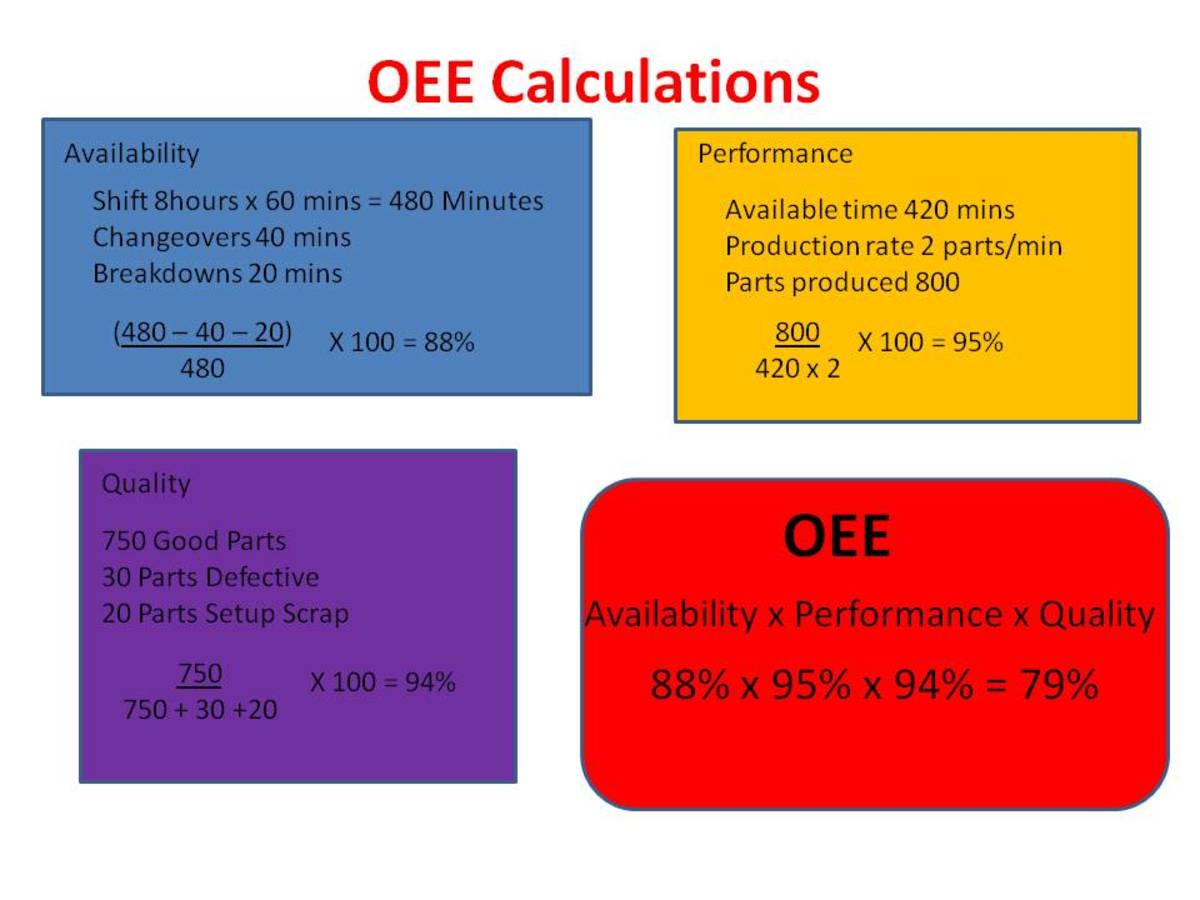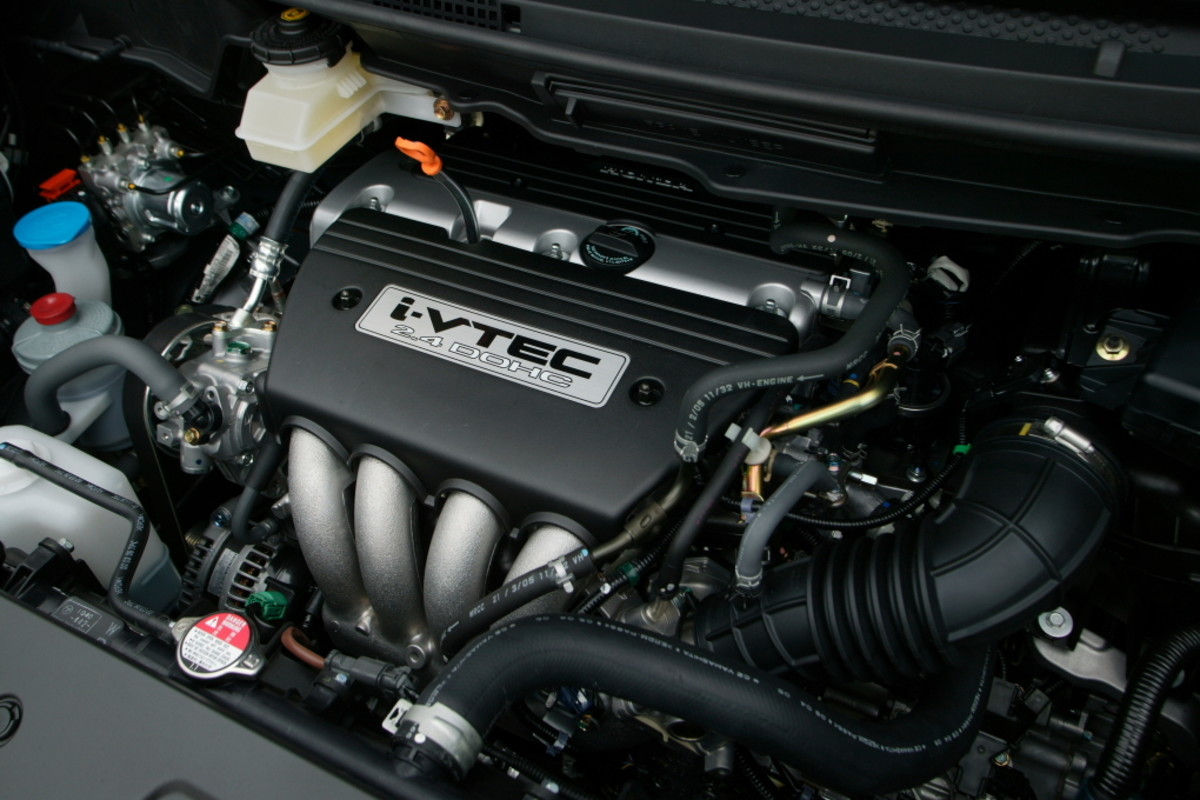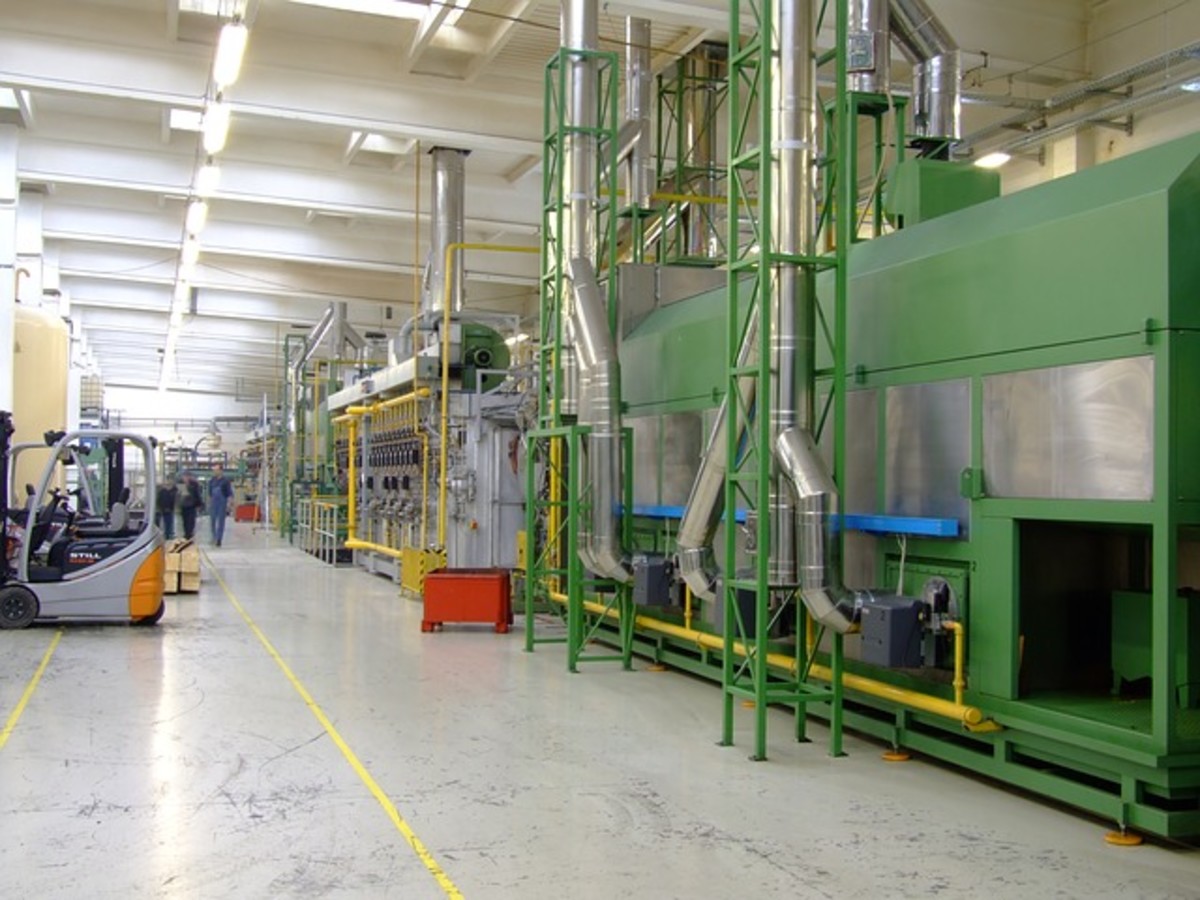OEE CALCULATION | Formula for Overall Equipment Effectiveness
Overall Machine Effectiveness

OEE calculation is simple and it gives a clear picture of the effectiveness of machines and processes in a plant.
This article is about OEE, what it really means, how to calculate it and the important role it plays within any organization.
Overall equipment effectiveness is an important metric that needs to be tracked regularly so as to have the necessary data to make lean improvements.
Without knowing how machines are performing, it becomes very difficult to improve the overall system, and the lean efforts become unfocussed and ineffective.
What is OEE?
There has been a lot ambiguity about the definition and calculation of OEE. In fact, there sometimes seems to be no definite agreement on what the letters in the acronym OEE stand for.
Depending on who you ask, OEE stands for a number of things which people assume mean the same:
- Overall Efficiency Equation
- Overall Equipment Efficiency
- Overall Equipment Effectiveness
- Operational Equipment Efficiency
- Operational Equipment Effectiveness
There are also a raft of other terms that are mixed up in the whole OEE confusion:
- Overall People Effectiveness
- Overall Line Efficiency
- Overall Line Effectiveness
- Overall Plant Effectiveness
- Overall Plant Efficiency
The terms listed above all have their place as important metrics for giving a clear picture of how an organization is performing, but the OEE that is discussed in this article has to do with Overall Equipment Effectiveness.
OEE is a metric that measures the degree to which the available resources within an organization are utilized in the production of value for the customer.
It answers the basic question- “Of the planned production time, how much of it was effectively utilized for the purpose it was intended?”
Overall Equipment Effectiveness is a measure of the effectiveness of a machine or facility. Machines are used by a production facility to either produce a product or to support the production of a product.
Machines that are not effectively producing the products they are designed to produce will be costly to the organization. The quality and delivery of the product to the customer will also be affected which will lead to even more costs to the organization.
In discussing OEE and how to measure and calculate it, there are two terms that always appear to be poorly understood – effectiveness and efficiency.
Before going further to discuss overall equipment effectiveness, it makes sense to clear the air on what these two terms actually mean so as to avoid confusion especially when calculating the metric.
What is the Difference between Efficiency & Effectiveness?
When discussing business processes, most people tend to use the terms efficiency and effectiveness interchangeably.
But are the two terms similar? The straight answer to that question is no, efficiency means something totally different from effectiveness.
In order for one to understand the difference between effectiveness and efficiency, it is necessary to remember the following simple definition of the terms:
- Efficiency means doing things the right way
- Effectiveness means doing the right thing
In effect, effectiveness is the actual output in relation to the planned output of a process, while efficiency is how well the available resources were used to arrive at the current output.
One will therefore be inclined to ask – which is more important between efficiency and effectiveness?
We will answer that question by using a typical example as you might find in your everyday manufacturing outfit.
OEE Effectiveness Example
To understand the difference between the terms, let us take the example a firm that produces light bulbs, we will call the company XYZ Light Bulbs.
Imagine the ideal capacity of the factory making the bulbs is 1000 bulbs – if it produces 700 bulbs then we can say that the plant was 70% effective at producing the bulbs.
Put another way, the plant is 70% effective as compared to the ideal capacity which would be 100% if everything was right. Whether the plant did this efficiently is another matter altogether.
Factors that affect machine effectiveness
OEE is a key metric that measures how profitably a company is producing the products that it sells to its customers.
Every machine has its designed rating from the manufacturer and any machine that does not meet this rating is not producing effectively
There are a number of factors that affect machine effectiveness:
- Raw materials- if the materials required for the production of a particular part are not available or are defective, the machine’s effectiveness will be affected by down time related issues. A machine that is always waiting for materials is not an effectively utilized machine.
- Methods- the standards used by an organization to produce a product affect the productivity of a machine either positively or negatively. For example, companies using the batch method of production will find that the machine’s productivity will be severely reduced. On the hand, lean manufacturing methods will result in the effective utilization of the machines.
- Labour- machines require people to operate them and if the labour is not well deployed, it will be difficult to meet the production goals of the facility. The manpower deployed to operate the machines must also be properly skilled so as to operate them properly.
OEE Efficiency Example
We will stay with the same company that we gave in the example on effectiveness. We had seen that the company was 70% effective at producing 700 bulbs against a target of 1000 bulbs.
To understand the efficiency part of the equation, we will need to consider what was the cost of that 70% effectiveness?
If for example, more labour was required to achieve that 70% effectiveness, it means that the process efficiency is not at an acceptable level.
The same will also apply for quality – if of the 700 bulbs that were produced only 350 were saleable then it would mean that the efficiency was at 50%.
That is unacceptable trade-off to make for the sake of effectiveness and it would mean that the company is spending more resources to produce fewer quality products.
Factors Affecting OEE Efficiency – Machine Losses
Machine losses are caused by a number of factors:
- Breakdowns: will result in downtime for the maintenance repairs and the sourcing of replacement parts.
- Poor Standards: if the machines are not operated as per the design specification they are bound to lead to losses in production. The machines will also breakdown frequently.
- Extraneous factors: conditions outside the immediate control of the machine operators can also result in down time. These extraneous factors include increased orders, change of type of orders and change in customer specifications
How to Calculate OEE: Formula
The OEE calculation is done using a simple and straight forward formula:
OEE= Availability X Performance X Quality
Availability: Definition & Calculation in OEE
Availability is the ratio of the actual time a machine or facility was working against the available time for it to work.
How to Calculate OEE Production Availability
Availability is calculated by dividing actual time with available time and getting the percentage--(Actual time/ Available Time X 100).
For example, if a machine operates for 4 hours against the available time of 8 hours, the availability of that machine will be 50%
Performance: Definition & Calculation in OEE
Performance is a ratio of the actual output against the specified output.
How to Calculate OEE Production Performance
Performance is calculated by dividing the actual performance by the rated performance and getting the percentage—(Actual performance/ Rated performance X 100). If for example a machine’s specification indicates that it can operate at an output of 100 pieces per hour but it produces 80 pieces per hour, the performance of the machine will be 80%.
Quality: Definition & Calculation in OEE
Quality is the ratio of the actual number of good parts produced against the total number of parts produced irrespective of their quality.
How to Calculate OEE Production Quality
Quality is calculated by dividing the actual number of good parts by the total number of parts produced over a given period of time—(Actual number of good parts/ Total number X 100). If the total number of parts produced was 1000 and only 500 of those were good, then the quality produced will be 50%.
Overall Equipment Effectiveness (OEE) for the above machine would be calculated as follows:
OEE= 50% (Availability) X 80% (Performance) X 50% (Quality) = 20%
This shows an overall effectiveness that is very low. Each of the three component metrics must perform at a very high rate for the overall performance to be near or above the world class performance of 80%.
A machine should produce at the rate it was designed to produce at. For example, if machine ‘A’ was designed to produce 5 widgets per hour and the total available time for production is 8 hours, then the total production should be 40 widgets per day.
The machine utilization in this case will be 100%. This is an ideal that is rarely met in a normal production situation because of the losses attributed to quality, downtime and speed.
- Downtime Losses- reduced output from unutilised machine time
- Speed Losses- production below the specification rate of output
- Quality Losses- output that is below the customer’s specification








